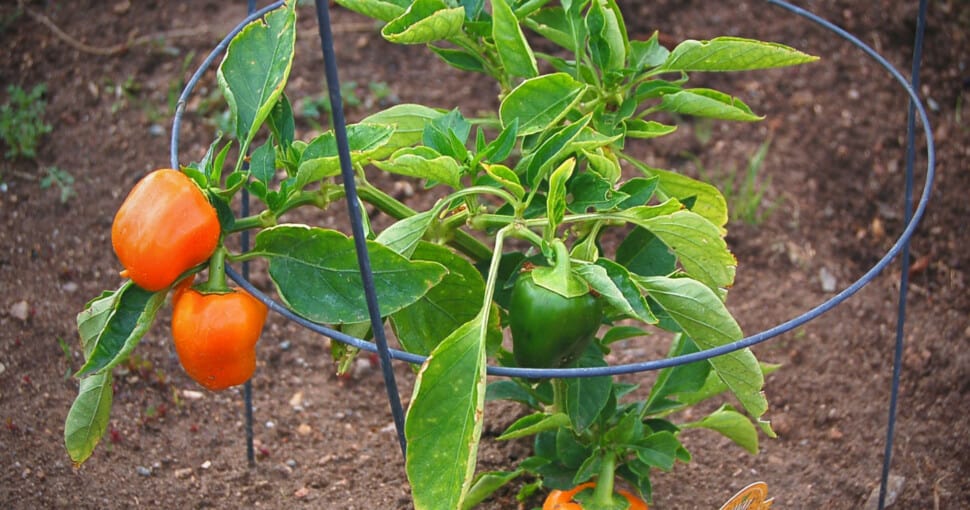Many kinds of peppers are commercially available today to purchase in grocery stores and at nurseries to grow at home. The most well-known pepper is the Bell pepper, also known as sweet pepper, which comes in various colors, including red, yellow, green, and orange.
Contents
Bell peppers are technically a fruit, classified botanically as berries but most commonly used as a vegetable. Bell peppers have a wide taste profile and can be added to many different dishes. Few people plant Bell peppers for cosmetic reasons. Some plants that look like peppers include:
- Medusa Pepper – is an ornamental pepper that is long and thin and shares the same color variations as bell peppers, including red and yellow.
- Black Pearl Pepper – is an ornamental pepper whose foliage resembles the shape of bell peppers but has a distinct black color in both its leaves and fruit.
- Chilly Chili Pepper – has dark red and yellow peppers, much like bell peppers, and is also ornamental.
- Masquerade Pepper – is an ornamental pepper with a distinct purple color and most closely resembles bell peppers when closely examining their leaves.
- Purple Flash Pepper – are ornamental peppers that look like bell peppers while still immature.
- Tangerine Dream Pepper – are short orange peppers that could be mistaken for infant bell peppers.
- Aurora Pepper – is an edible pepper that resembles bell peppers and comes in red, orange, and purple.
There is a large variety of plants that look like peppers. Some are ornamental, while others are edible. Different kinds of pepper thrive in different climates, though they most commonly prefer hotter areas with little to no rain. Let’s look at these 7 plants resembling the common pepper more closely.
1. Medusa Pepper (Capsicum Annuum)
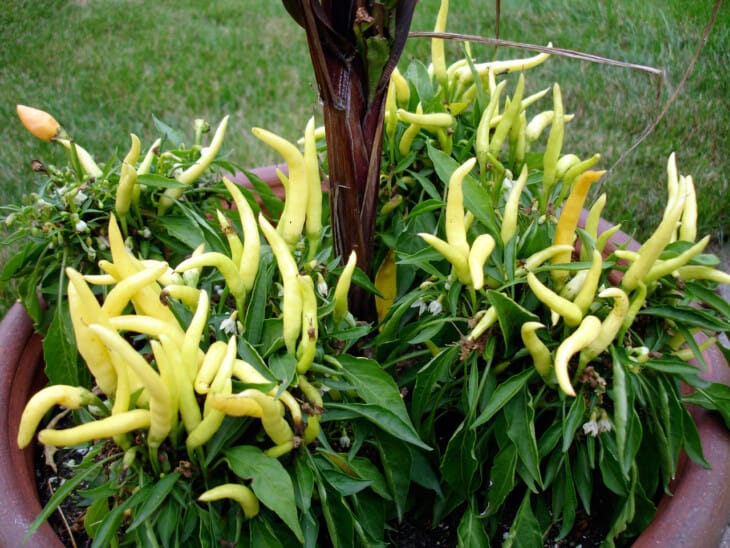
Medusa Pepper (Capsicum Annuum) is an annual ornamental pepper that blooms during the summer and can grow to 8 inches when planted in full sunlight. They have bright yellow and red peppers that grow in clusters of up to 50 fruits per plant. Their leaves are almost indistinguishable from that of the common Bell pepper.
Medusa Peppers make for excellent garden decorations as they are very colorful and naturally non-pungent. Medusa Peppers are also child-safe, meaning that children won’t be harmed if they accidentally come into contact with Medusa Peppers.
If you plan on homing a Medusa Pepper, pick a pot at least 4 inches wide, as the Medusa Pepper requires quite a bit of space to mature fully. Carefully watering your Madusa Pepper once a week will ensure it stays happy and healthy throughout the hot summer months.
2. Black Pearl Pepper (Capsicum Annuum)
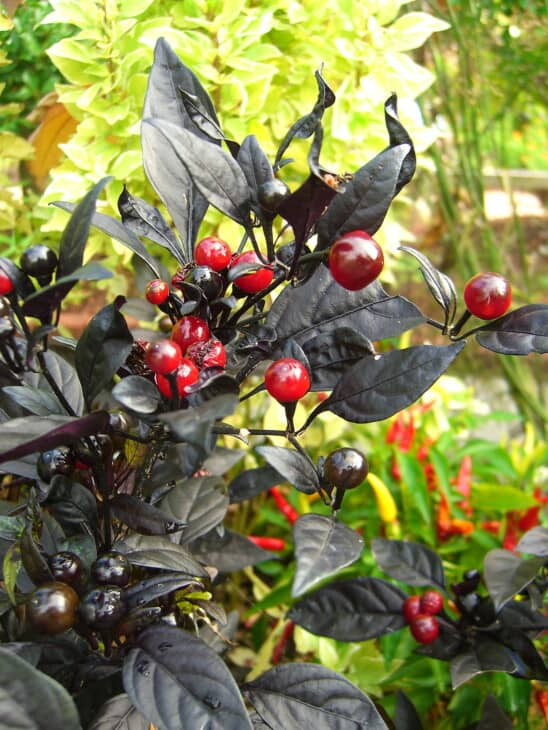
Black Pearl Pepper (Capsicum Annuum) is another annual ornamental pepper that blooms during late summer. When young, Black Pearl Peppers have greenish leaves that slowly become glossy black as the plant matures, making the Black Pearl Pepper one of the most interesting peppers commercially available today.
Black Pearl Peppers are ideal for landscapers who want to bring something different and more diffused to their garden. Black Pearl Peppers’ fruit is small, shiny, and black that turns red as they mature. Black Pearl Peppers can grow to 18 inches in height and 16 inches in width.
If you want to plant Black Pearl Peppers in your garden, ensure that you plant them in full sunlight. They do well in pots and the ground if you plant them in well-drained soil. Taking care of your Black Pearl Peppers will ensure you enjoy them all year.
3. Chilly Chili Pepper (Capsicum Annuum)
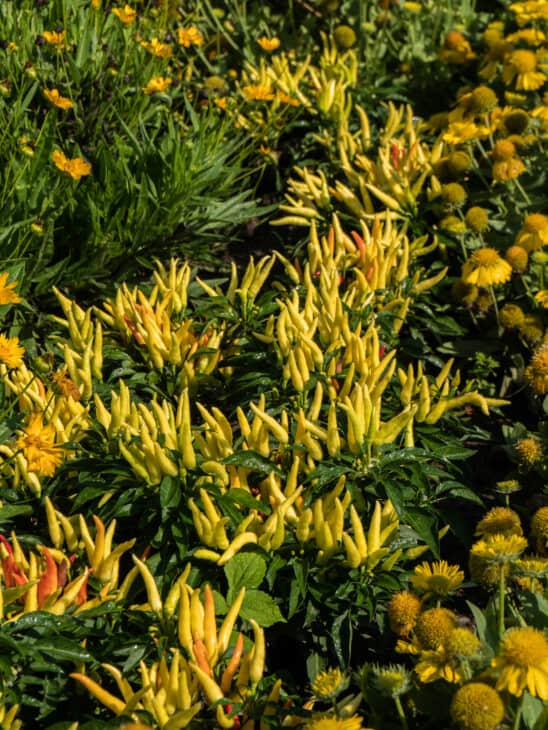
Chilly Chili Pepper (Capsicum Annuum) is a great ornamental pepper that resembles bell peppers. This child-safe plant is ideal for indoor and outdoor decoration and is most commonly used in public spaces. Chilly Chili Peppers grow to a maximum height of 10 inches when grown in full sunlight.
Chilly Chili Peppers bloom during the summer and thrive in well-drained soil. Aspiring botanists can plant Chilly Chili Peppers in their gardens at home to bring a splash of bright reds and yellows to an otherwise uninteresting patch of land.
Chilly Chili Peppers are very low maintenance and only require watering once a week, like most peppers. If your thumb isn’t sufficiently green yet, consider picking up a packet of Chilly Chili Pepper seeds and start your landscaping journey off on the right foot.
4. Masquerade Pepper (Capsicum Annuum)
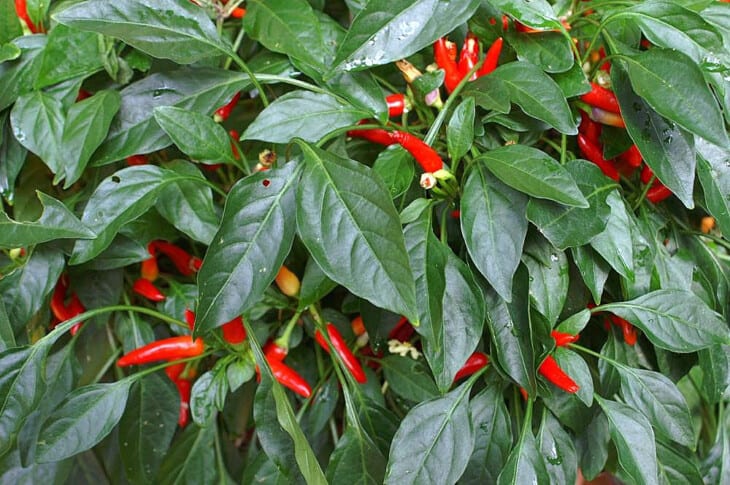
Masquerade Pepper (Capsicum Annuum) forms part of the Longum Group and produces dense clusters of elongated fruit that start yellow, turn orange, and settle into a brilliant purple color. Masquerade Peppers do very well in hot, arid climates and prefer to be planted in direct sunlight.
Masquerade Peppers grow to 12 inches tall and spread over 12 inches wide. Enthusiastic gardeners will tell you that Masquerade Peppers are the ideal plant to use as a border or to plant in various hanging baskets.
Masquerade Peppers don’t tolerate standing water very well, so if you buy a few, plant them in well-drained soil and only water them occasionally. The less time your Masquerade Pepper spends wet, the happier it will be and the longer it will last.
5. Purple Flash Pepper (Capsicum Annuum)
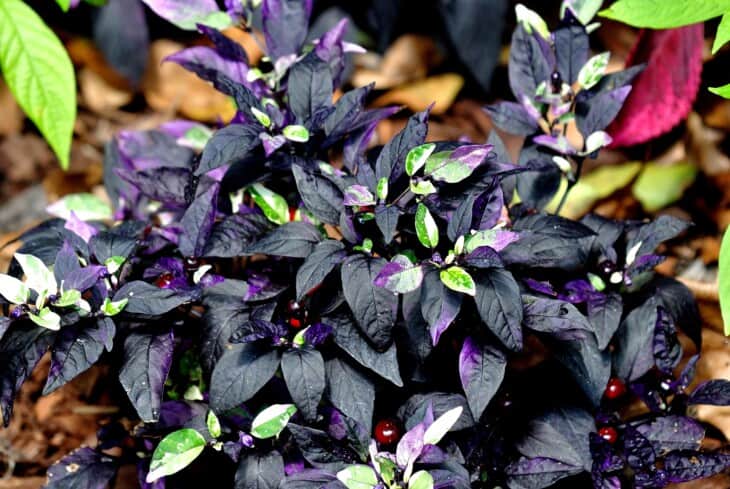
Purple Flash Peppers (Capsicum Annuum) are low-maintenance, heat-resistant, drought-tolerant, ornamental peppers. They grow to medium size, standing roughly 15 inches tall when fully mature. Their bright purple fruit and dark purple foliage bring an air of mystery to any garden they are cultivated in.
Purple Flash Peppers must be planted in direct sunlight, in well-drained soil, and fertilized every two weeks, to ensure optimal growth. Following these guidelines will yield a field of beautiful plants that will last all summer.
If you find that your Purple Flash Pepper isn’t taking particularly well to the soil in your garden, consider transplanting it to a hanging basket or a pot and try keeping them inside your home for a short period while they recover.
6. Tangerine Dream Pepper (Capsicum Annuum)
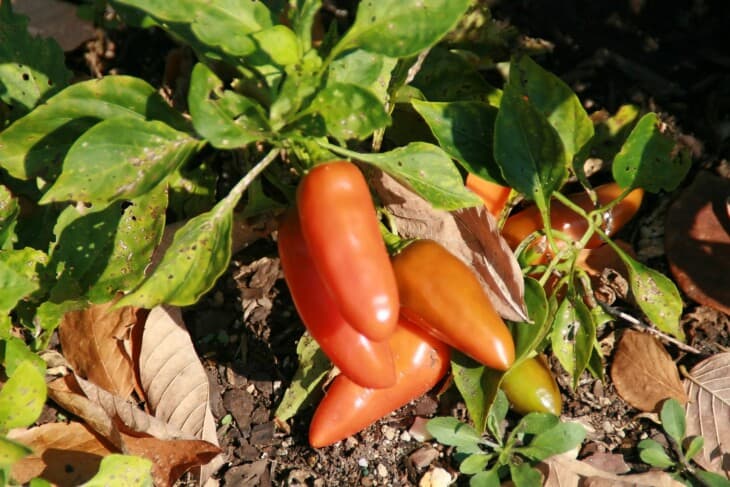
Tangerine Dream Pepper (Capsicum Annuum) most closely resembles Bell peppers as they are short and yellow, averaging a length of 2 to 3 inches long and 1 inch wide. Their smooth, waxy skin starts green before turning a bright orange.
Though edible, Tangerine Dream Peppers are mostly used as ornamental plants. They grow upright in tight clusters, forming an almost bouquet-like fruit arrangement. Tangerine Dream Peppers can grow in your garden or inside your home when planted in a pot.
Tangerine Dream Peppers, like most peppers, prefer a hot and dry environment and don’t do well in cold and damp climates. Consider the ambient temperature of your home and how hot your summer gets before committing to purchasing Tangerine Dream Peppers.
7. Aurora Pepper (Capsicum Annuum)
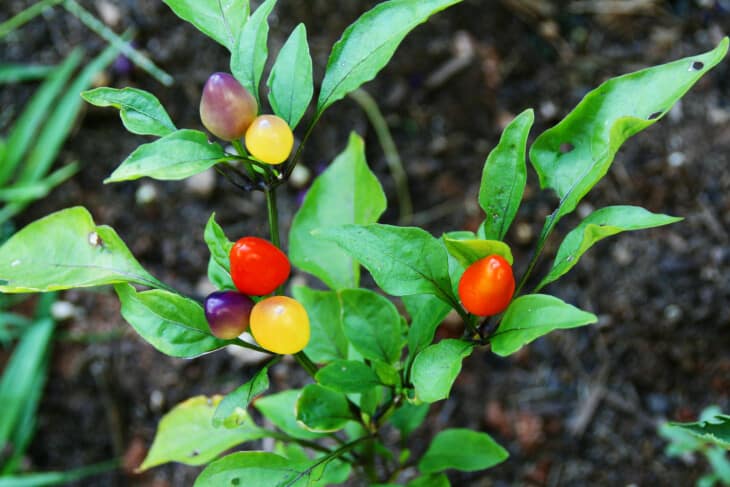
Aurora Peppers (Capsicum Annuum) have round bulb-like fruits that come in various shades of green, orange, yellow, red, and purple. Some have called the Aurora Pepper the “Christmas Light Pepper” because of all its colors, making it the perfect decorative pepper for your garden.
Aurora Peppers are also edible, though extremely hot, making them a good fit for a spicy homemade dish, particularly salsas. They are about 4 to 20 times hotter than your average Jalapeño, with a moderate Scoville heat of 40,000 SHU.
Aurora Peppers are native to Mexico and must be cultivated in an arid environment. Attempting to plant Aurora Peppers in a damp, cold garden will fail. Consider your home and gauge whether it would fit the Aurora Pepper well. If your home is suitable, ensure that you plant your Aurora Pepper in well-drained soil and only water it when necessary, or risk drowning your young plant.

